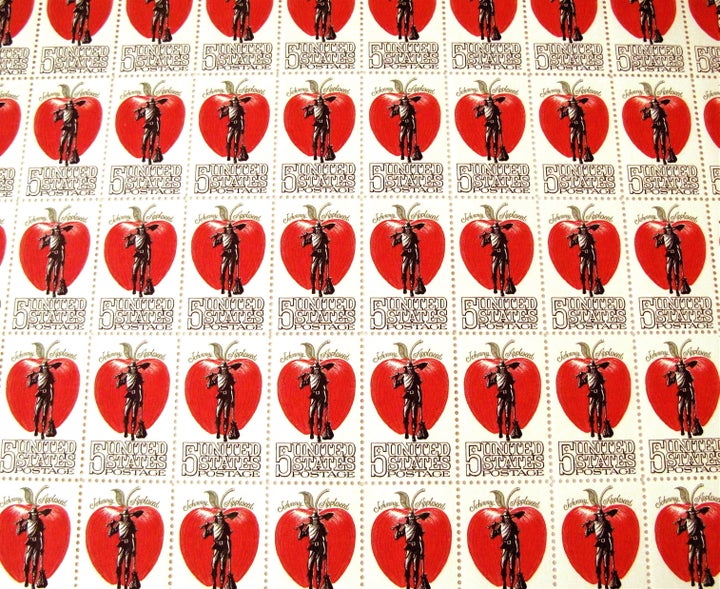
When each of us was in third grade, we learned the legend of John Chapman, a.k.a. Johnny Appleseed. We were taught of his beneficence, and we marveled over the Disney-esque pen and ink drawings of him wandering barefoot through the woods, tin pot on his head, followed by an assortment of happy woodland creatures. He was the pioneer saint, there to spread the healthy goodness of apples across the frontier in advance of the great westward expansion.
What Mrs. Klein, my third grade teacher failed to tell me (likely yours failed to mention this as well), is that Chapman's intentions were not entirely magnanimous, and the fruits of his labors were not meant for children. When he set out from Massachusetts in 1797 towards Pennsylvania, Ohio, and eventually Fort Wayne, Indiana, pioneers could lay claim to land simply by having planted a crop there. His savvy as a land speculator and as a nurseryman selling seedlings to the region's new arrivals made him quite a wealthy man. And those apples were not meant for keeping the doctor away or giving to prairie schoolmarms. Apples grown from seeds (as opposed to grafts) were, as HD Thoreau once wrote "sour enough to set a squirrel's teeth on edge and make a jay scream." No, these apples were meant for cider, and not the soft sweet stuff either.
Water was risky at the time, often carrying disease or smelling of iron or sulfur. To quench a thirst, many relied on alcoholic beverages because, as would be discovered decades later, the alcohol in the liquid staved off bacterial contamination. Hard cider was among the most popular of these because of the flavor and relative ease of production.
In the pre-prohibition fervor of the early 1900's, the apple industry need something to help distance them from the "scourge of drink" and soften their image among consumers, thus the character of Johnny Appleseed, as we learned him in elementary school, was born.
Today hard cider has fallen out of the mainstream, owing to the ages-old popularity and relatively recent ease of access of beer and wine. Here in Iowa, Scott Ervin is trying to reverse that (as are many others around the country). Just north of the historic Sutliff Bridge, Ervin is making magical, full-flavored, robust hard cider from local apples (and nothing else). Unlike the ones you may have seen in the stores, notably Woodchuck from Vermont and Woodpecker from England, Sutliff Cider has no sugar, grape or cane juice added. It's just apples.
And because the apple varieties, sugar content and flavor profiles change from year to year, so do the ciders. They're always excellent, though never identical, and come in 750ml bottles for $6/btl; $65/cs. Cider makers across the country are doing it too. Do you have a favorite local hard cider? List it here then make some of this traditional Spanish dish to share with your friends.
Chorizo Cooked in Cider
This is a classic tapa from the Basque region of Spain, and is also very popular in nearby Galicia, where apple growing and hard cider (sidra) have been traditions for centuries.
1 tablespoon olive oil
1 small onion, finely chopped
1-1/2 teaspoons smoked Spanish paprika (pimentón)
8 oz chorizo sausage, (Spanish, not Mexican, which is usually to spicy) cut into diagonal slices
1/2 cup hard apple cider
1/4 cup chicken stock
1 bay leaf
2 teaspoons sherry vinegar, or to taste
2 teaspoons chopped fresh parsley
In an earthenware cazuela, or a sauté pan, heat the olive oil over medium high heat. Sauté the onions, stirring frequently, until translucent, but not brown. Add the paprika, stir, and add the chorizo. When the chorizo is browned, add the remaining ingredients and cook a further 5-7 minutes, or until the liquid is reduced by half.
Remove the bay leaf, and serve immediately garnished with parsley, with toothpicks and cold hard cider.